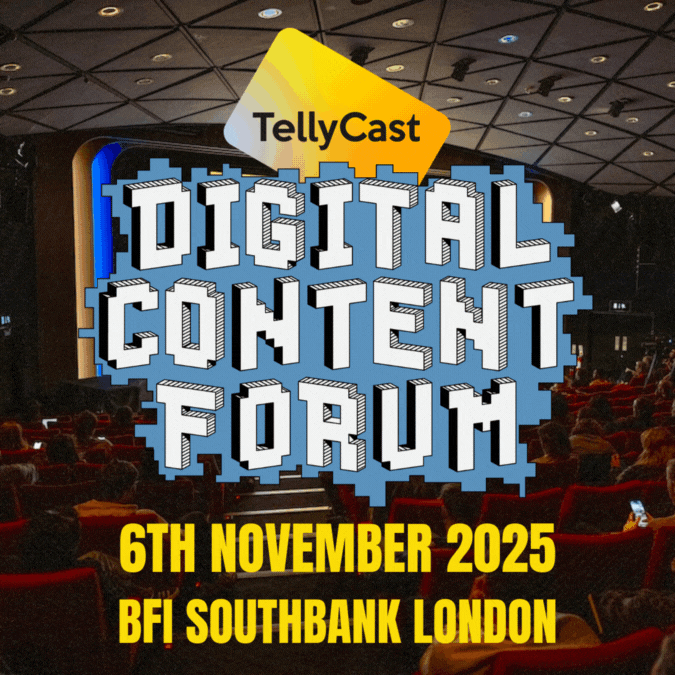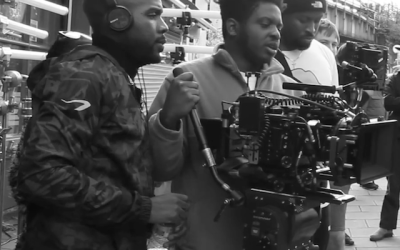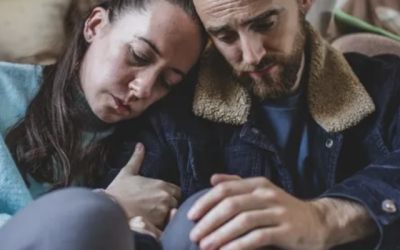Sam Glynne is head of UTA’s Entertainment & Culture Marketing group in EMEA. Previously head of Global Branded Entertainment at Fremantle, she was drafted in last year to set up the EMEA branch. In her new role, she manages UTA’s brand clients and is building the agency’s international strategy in the E&CM arena. Among clients on the company’s roster are the likes of Coca-Cola, GM, Google and LinkedIn.
This week, Glynne took time out of her schedule to talk to The Drop about the powerful intersection between talent, brands and culture. In a wide-ranging conversation she discussed data insights, storytelling and the importance of authenticity.
Can you tell us why you moved from Fremantle to UTA last year?
SG: Fremantle is an amazing production and distribution company. And we had done some ground-breaking brand insertions on shows like American Idol, The X Factor and Got Talent. But when talking to UTA I realised quickly that every conversation here is about talent first – and that’s what brands are always most interested in. If you’re working in a company like UTA where they understand the role of talent, and its association with entertainment and culture, then actually you’re in the premium place for branded entertainment. Aside from this emphasis on talent, what really fascinated me was the incredible level of data and intelligence UTA has at its disposal via a platform called IQ. That data is used to curate the careers of talent. It allows UTA to identify a particular piece of talent’s audience and predict where they should go next to have a hit. So they are mapping culture and entertainment, which is very intriguing for someone who is coming at this business from a brand perspective.
So how does UTA connect talent to brands? Does UTA represent brands in the way it would represent talent? Or is this about taking talent and IP into the open market to look for brands that might be interested in a partnership?
SG: UTA has an endorsements division that does the latter, and they bring opportunities to the stable of talent. But my division is more brand-centric, working with clients that keep us on retainer or bring us in on a project by project base. What’s exciting about E&CM is that we are managing brands the same way we would talent. We’re looking across the entertainment and cultural landscape for the right opportunities for them. That could be television, movies, podcasts, social, web 3.0, sport, anything. So I can plug a brand into multiple spokes across the cultural wheel.
So with these brand clients, are you agnostic? Or do you favour UTA talent?
SG: It’s always starts with what the data says, and what’s right for the brand.
Why do you have the word ‘culture’ in your title? What does that signify?
SG: I think it encapsulates the idea that culture is often about change. Entertainment is something you watch and enjoy, but cultural moments come out of that. They are the watercooler conversation and zeitgeist-y trends that brands want to be part of.
Do you have a recent example of the kind of work you do?
SG: We’re very proud of a deal we’ve just brokered between Netflix and one of our biggest clients, GM. It took a long time to iron out the detail but basically it relates to any new Netflix commissioned show that is set in contemporary times. The deal says that if the show has a vehicle in it, it has to be a GM electric vehicle. It’s a game-changer for both sides and puts GM at the forefront of sustainability in culture.
Presumably, it won’t be a really obtrusive forced fit?
SG: It certainly wouldn’t make sense just to put a GM car into a show randomly. It needs be relevant and in keeping with the script. That said, we’re always looking for ways that GM can make cultural connections that align with its messages. In the new Barbie live action movie, for example, Margot Robbie drives an electric Corvette.
Do you think that a Netflix/GM deal like this could have happened 3-5 years ago?
SG: Before the streamers started introducing ad tiers last year, I think there was a feeling it was inappropriate to have paid-for product placement in shows that people had subscribed to. But the market probably has a more flexible attitude now. Having said this, brands have always cropped up in streamer content via various models. It could be the result of a prop placement deal – or if a streamer acquires a show that already has brands integrated into it. A few years back, UTA was involved in a co-marketing deal between ride sharing app Lyft and Netflix series Stranger Things.
What is your advice to brands that want to engage with entertainment and culture. Aside from the importance of data, what should they think about?
SG: They have to think about who is going to handle their brand entertainment strategy… their insertion into entertainment and culture. The first expectation might be that one of their existing agencies might be able to do the job – or that they might do it in-house. But can the existing teams really turn your vision into reality? It might make more sense to talk to branded entertainment agencies that specialise in this area. Then there are questions about how branded entertainment fits into your overall marketing ecosystem, and how you want to spend your budget. You might decide to put the entire budget into having a storyline on Emily in Paris. But the same sum of money might give you a number of placements in music videos. So you need to figure out where your audiences are, how you want to talk to them, and how you’re going to make sure your brand values are aligned with the entity you are integrating into.
Have you any other current example of how E&CM works?
SG: A good example playing out right now is a campaign which partners Coca Cola with model and influencer Gigi Hadid. It’s called A Recipe for Magic and centres on the idea of people getting together and sharing meals. So we see Gigi cooking food for her friends, and then serving them Coca Cola with their meal. So that’s an example of bringing talent and brand together into a cross platform campaign.
How does what you’ve shared so far related to the digital first landscape?
SG: Well, brands love this space because they can measure it and track it more easily than broadcast. And they get involved in all kinds of ways. It could be an influencer campaign or a TV extension or licensed clips or a made for digital series. We did a series for Lyft called Undercover Lyft, which went out on digital platforms. These days, nothing survives without a digital wrap-around or a digital first execution.
I think it’s also worth saying that part of the beauty of digital first for brands is that there is nothing ‘dirty’ or ‘controversial’ about a brand funding content in this arena. Audiences and creators in digital first have understood from day one that this is how content gets made. It’s not like TV where the ads sit separately in their break. I think this mindset paves the way for interesting alliances between brands and talent.
Assuming the data directs you to digital platforms, who makes the content?
SG: That’s not our role, because we act as a consultancy. But our data can help connect the brand with the best possible production partners. We would have a scorecard that says which ones might fulfil the brand’s criteria. It’s also down to chemistry, how parties react when in a room together, but it refines the search.
Is it your sense that any brand can find a home in the branded content landscape – regardless of how utility-driven they are? Or is it only for sexy brands?
SG: Any brand can do it, if they find the right way to tell their story. One of my favourite examples was a film produced for Santander. It was a sci-fi, Black Mirror-style production about a woman who puts on a headset and can trade her most precious memories – like her first kiss and wedding day. That was about promoting a bank account where you could get experiences as rewards. It was very successful and underlines the point that any brand can find a way to engage with audiences.
As long as the brand finds a way to tell a compelling story…
SG: Yes. One of my clients is Ancestry.com. They are fascinating, because at the heart of their marketing is storytelling – and they’ve used content in a number of ways. In the UK, they are involved with an ITV show called DNA Journey. Here, they use their skills to facilitate research into family history. They have a bunch of amazing experts that ITV can put on camera to talk about family trees and genealogy. We’re also developing a project on TikTok around BookTok. That will put a brand together with an unexpected audience in a way you wouldn’t really have thought about.
Following up on the point about measurement, what do brands want to see from their digital first branded content investment? Sales? Brand metrics?
SG: It’s hard to link a direct sale to a piece of branded entertainment, so I think the most effective measurement is usually brand uplifts. So we would look at the brand’s KPIs, get insights from IQ, conduct qualitative and quantitative research. But I think it’s fair to say brands need to manage expectations around branded entertainment metrics. The sooner an accepted framework is created, globally, that encompasses how we measure this area, the more mainstream and integrated it will become.
Having said that, you made some intriguing observations about ‘shoppable’ branded content at the Digital Content Forum last autumn. That presumably is one innovation that would prove the link between content marketing and sales.
SG: 100%. I’m surprised it hasn’t happened in Europe yet. It’s well developed in Asia, so I would say watch this space. I can remember seeing research about how frustrated young consumers get when they can’t immediately buy something that they’ve seen online. And I know there has been a growth in people booking holidays based on what they’ve seen on screen. With a shift towards shoppability that gap is closed, because it is seamless – unlike a lot of the clunky technologies that we’ve been used to.
Echoing our earlier question, what kind of things should brands think about if they are going down the route of branded entertainment on digital platforms?
SG: Coming from a TV background, I think it’s always worth considering the rights and ownership issue in advance. I see plenty of situations where brands have been involved in creating an amazing piece of content, but have no rights to distribute it outside the original platform. Once you’ve done something in one place, you should be thinking about how you can replicate it across different territories or platforms.
Finally, how would you advise a digital first talent who wants to work with brands. What can they do to make themselves more compelling?
SG: The main thing is to be authentic. Whatever brands you work with should be completely within your wheelhouse – because it’s easy to sniff out anything that isn’t right. The Gigi Hadid campaign with Coca Cola works because it feels very natural. She likes to cook, she’s having dinner, she’s with friends. There’s nothing contrived.





